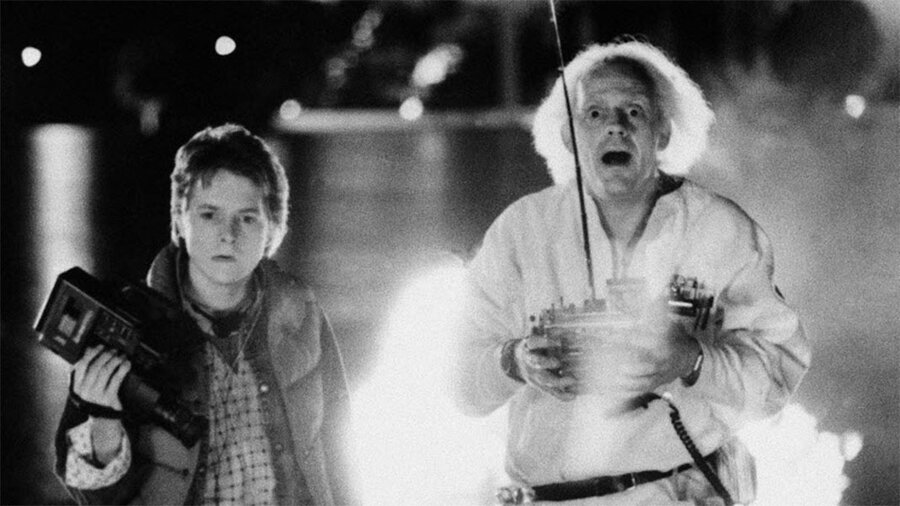'Back to the Future': How the movie's portrayal of the future differed from its 1980s fellows
Loading...
Keep an eye out for Doc Brown and Marty McFly on Wednesday. Oct. 21, 2015 is being celebrated by fans as Back to the Future Day. In the movie “Back to the Future Part II,” that’s the day in which Doc and Marty arrive in what was then “the future.”
The first film centers on Marty (Michael J. Fox) traveling back in time to the 1950s and having to nudge his parents into falling in love in order to ensure his own existence. At the end of the first film, Doc (Christopher Lloyd) arrives from the future, urging Marty and his girlfriend Jennifer (Claudia Wells in the first film, then Elisabeth Shue) to come along – there’s a problem in the future that needs solving.
When Marty goes to the future in 1989’s “Back to the Future Part II,” though, things don’t seem too bad. Flying cars are much in evidence and people are wearing wacky clothes (aren’t they always?), but the worst societal threat seems to be a “Jaws 19” sequel.
In “Back to the Future Part II,” the problems are more personal, as when Marty becomes involved in an immoral business decision and villain Biff (Thomas F. Wilson) must be stopped from using time travel to become rich and turning their town of Hill Valley into a troubled area. The "Back to the Future" series had a fun, comedic feel in general, so in the "Future" movies, 2015 is never too dark.
The fairly positive vision of the future seen in “Back to the Future Part II” is certainly a contrast to other ‘80s science fiction films. In the 1982 movie “Blade Runner,” which was based on the 1968 Philip K. Dick book “Do Androids Dream of Electric Sheep?,” society by the year 2019 is taking place in what seems to be eternal darkness, and replicants, or robotic people, are viewed as second-class. In 1984’s “The Terminator,” which was co-written by director James Cameron and Gale Ann Hurd, humans in the year 2029 are battling the supercomputer Skynet's army of deadly machines and living in a landscape decimated by nuclear weapons. 1987’s “Robocop” had humans attempt to solve a crime problem by putting a brutal cyborg in the field as law enforcement.
But even those behind some of the most recent dark cinematic visions of the future had their stories end with at least some positivity. In the “Terminator” series, the reason Skynet attempts to kill the mother (Linda Hamilton) of the leader of the human resistance is because the resistance is doing so well – there's a chance humans could defeat them. In addition, the villain of the first film, a Terminator (Arnold Schwarzenegger), comes to care for his human companions. In “Blade Runner,” one possible ending (various cuts have been released) shows the protagonist and his love interest leaving dark Los Angeles for a mountainous, green area.
More recent films echo this, too. In 2006's "Children of Men," no one has given birth to a child in years, but near the end of the film, a woman finally does so. And in the 2008 Pixar movie “WALL-E,” humans left a ruined Earth long ago for spaceships where they never exert themselves. However, by the end of the movie, one of the spaceships and its residents have returned and seem committed to helping Earth recover.






